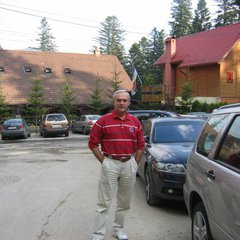- By medium
- By subject
- By budget
- Sales
- Gift cards
- Discover all art
- Artists
- Editors’ picks
- Ideas
Original artwork description:
Oil on canvas 55 x 40 cm – Rees Valley New Zealand
Painting a mountain river.
Landscape painting is an exciting form of artists' expression. It has progressed over the centuries dominating the world of art today. It requires the use of some specific techniques that define a work of art. Here are some of the most important aspects that are fundamental in the oil painting process:
- Subject – an image that attracts attention in a spectacular way
- Composition – a pleasant, balanced and harmonious arrangement. The artist can add or remove elements for this purpose.
- Focal point – an area that immediately captures attention.
- Rule of thirds - points of interest are placed in certain areas.
- Perspective - creating a sense of depth and three-dimensional image
- Emotion – obtaining a state of peace, pleasure, relaxation, calm, etc.
- Brushwork – brushes of different sizes, with traces of various textures and shapes.
- Shadow and light - contrast through the play of shadow and light
- Coloring - combinations of complementary, analogous, tertiary colors, etc.
- Simplification - balance without complicated details
- "Fat over lean" - each successive layer of paint must have more oil than the previous layer
Using these basic techniques, the artist hones his skills as a landscape painter and can create captivating works of art that reflect the beauty and majesty of nature. Painting should be fun and creative, and the continuous experimentation of these principles and techniques bring with them the artist's desire and pleasure to create beauty.
Materials used:
oil colors
Tags:
#landscape artMountain river (2024) Oil painting
by George Budai
1 Artist Reviews
£785.16
- Oil painting on Canvas
- One of a kind artwork
- Size: 60 x 40 x 1cm (unframed) / 60 x 40cm (actual image size)
- Signed on the front
- Style: Impressionistic
- Subject: Landscapes, sea and sky
Loading
Original artwork description
Oil on canvas 55 x 40 cm – Rees Valley New Zealand
Painting a mountain river.
Landscape painting is an exciting form of artists' expression. It has progressed over the centuries dominating the world of art today. It requires the use of some specific techniques that define a work of art. Here are some of the most important aspects that are fundamental in the oil painting process:
- Subject – an image that attracts attention in a spectacular way
- Composition – a pleasant, balanced and harmonious arrangement. The artist can add or remove elements for this purpose.
- Focal point – an area that immediately captures attention.
- Rule of thirds - points of interest are placed in certain areas.
- Perspective - creating a sense of depth and three-dimensional image
- Emotion – obtaining a state of peace, pleasure, relaxation, calm, etc.
- Brushwork – brushes of different sizes, with traces of various textures and shapes.
- Shadow and light - contrast through the play of shadow and light
- Coloring - combinations of complementary, analogous, tertiary colors, etc.
- Simplification - balance without complicated details
- "Fat over lean" - each successive layer of paint must have more oil than the previous layer
Using these basic techniques, the artist hones his skills as a landscape painter and can create captivating works of art that reflect the beauty and majesty of nature. Painting should be fun and creative, and the continuous experimentation of these principles and techniques bring with them the artist's desire and pleasure to create beauty.
Materials used:
oil colors
Tags:
#landscape art14 day money back guaranteeLearn more

